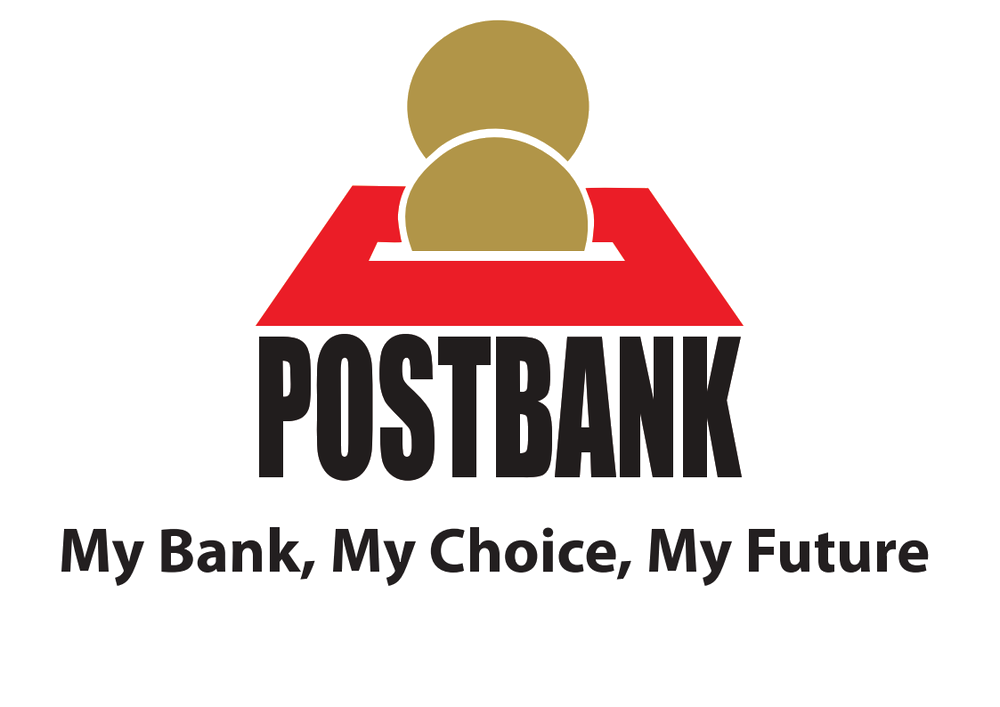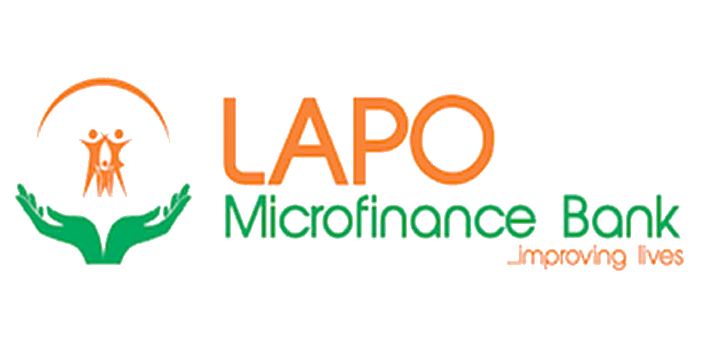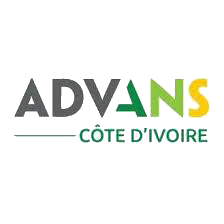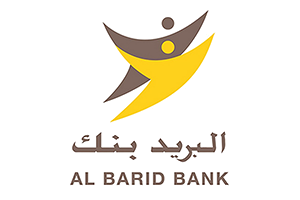ESBG stresses the need for timely assessment of loans with ESG-linked features in its letter to the IASB Chair
On 23 November, the ESBG sent a letter to the International Accounting Standards Board (IASB) Chair, Andreas Barckow. The letter stressed the urgency of for the IASB to deliver the solution for the Solely Payments of Principal and Interest (SPPI) assessment of loans with ESG-linked features on a timely manner.
In the letter, the ESBG expresses concerns that the IASB’s deliberations on the first two topics (CLIs and electronic cash transfers) have not progressed as much as the ESG topic. The exposure draft is now planned to be issued in H1 2023. In our view, these topics have more potential to cause diverging feedback and thus delay the final amendments further.
Moreover, comparably to the ESG topic, the equity instruments and other comprehensive income topic has been deliberated to its final stage by the IASB. The ESBG considers the proposed two minor amendments of disclosure requirements to be helpful.
By way of consequence, the ESBG members would appreciate if the IASB addressed the ESG topic separately and proceeded to issuing the exposure draft as originally planned in Q1 2023. Considering the advanced stage and the content of the decisions made by the IASB for the topic of equity instruments and other comprehensive income, we suggest that it would also be included in the exposure draft.
Read the letter
Call for clear scope of applicability of the Cyber Resilience Act
On 14 November, ESBG submitted its input to the European Commission’s call for feedback on the proposed Cyber Resilience Act, which was published in September. All feedback received will be summarised by the Commission and presented to the European Parliament and Council with the aim of feeding into the legislative debate.
On 15 September, the Commission published a proposal for a Cyber Resilience Act, which aims to protect consumers and businesses from products with inadequate security features. The Cyber Resilience Act introduces mandatory cybersecurity requirements for products with digital elements. It will ensure that digital products, such as wireless and wired products and software, are more secure for consumers across the EU. In addition to increasing the responsibility of manufacturers by obliging them to provide security support and software updates to address identified vulnerabilities, it will enable consumers to have sufficient information about the cybersecurity of the products they buy and use.
In the position paper, ESBG members welcome the Commission proposal and support the goal of only having secure software on the internal market. However, members believe that the Cyber Resilience Act leaves too much room for interpretation regarding its scope of applicability and therefore proposes that the Commission should make a clear scope-statement that would dissolve any uncertainty whether the software developed, operated, or marketed by financial institutions is in scope of this Act.
In addition, there are vertical initiatives that already regulate the cyber-resilience of hardware and software products used by certain sectors. This is the case of the Digital Operational Resilience Act (DORA) for the financial sector, a regulatory framework specifically designed and developed to ensure the digital operational resilience of the financial sector. Extending the scope of the Cyber Resilience Act to products manufactured by credit institutions may place additional burdens onto banks, on top of the already existing tight regulatory corset.
related
European Banking Authority (EBA) on ESG risk management
The European Savings and Retail Banking Group (ESBG) submitted its response to the consultation launched by the European Banking Authority (EBA). ESBG insists on the need for consitency with CSRD and CSDDD, the addressees of this guideline should also
Enhancing Transparency in Bank Disclosures: ESBG delivers comprehensive response to the EBA’s Pillar 3 data hub consultation
On 14 December 2023, the European Banking Authority (EBA) published a discussion paper on the Pillar 3 data hub processes and its possible practical implications.
IASB Exposure Draft (ED) on Financial Instruments with Characteristics of Equity
On 29 November 2023, the International Accounting Standards Board (IASB) proposed amendments in an Exposure Draft to tackle challenges in financial reporting for instruments with both
ESBG’s response to the EFRAG Comment Letter on Financial Instruments with Characteristics of Equity
On 29 November 2023, the International Accounting Standards Board (IASB) proposed amendments in an Exposure Draft to tackle
ESBG advocates for increased clarity and streamlining of supervisory reporting requirements
On 14 March, ESBG submitted its response to the European Banking Authority (EBA) consultation on ITS amending Commission Implementation Regulation (EU) 2021/451 regarding supervisory reporting
WSBI-ESBG advocates for robust implementation of the BCBS Pillar 3 framework for climate-related financial risks
On 14 March, WSBI-ESBG submitted its response to the Basel Committee on Banking Supervision (BCBS) consultation on its Pillar 3 disclosure framework for climate-related financial risks
ESBG stresses the need for consistency and clarity in its Response to the SFDR Review Consultation
ESBG submitted its response to the European Commission’s consultation on the SFDR review, aiming to enhance transparency in sustainability-related disclosures within the financial services sector
ESBG response to the EBA’s consultation on Guidelines on preventing the abuse of funds and certain crypto-assets transfers for ML/TF
The guidelines on the “travel rule” delineate the actions that Payment Service Providers (PSPs), Intermediary PSPs
ESBG responds to the SRB consultation on the future MREL policy
The European Savings and Retail Banking Group (ESBG) submitted its response to the consultation launched by the Single Resolution Board (SRB) in December 2023 on the future of the Minimum Requirement for own funds
ESBG’s response to the Commission’s consultation on the GDPR
The primary EU legislation ensuring the fundamental right to data protection is the General Data Protection Regulation
Payment Fintech:Quo Vadis?
ESBG Spotlight 6 December 2022 – Jan Vermeulen (NBB), Payment Fintech: Quo Vadis?
It seems that most Fintech companies target payments as the holy grail for their business. Since PSD2 has brought the opportunity for those Fintech companies to become licensed to operate in payments, the number of FinTech companies as well as the granted licenses showed impressive growth. But is it all gold that glitters?
Now that the review of PSD2 is taking place, Jan Vermeulen, directly overseeing the Belgium-based licensed FinTech companies at the National Bank of Belgium, will take stock on whether that is the case or not.
During this ESBG Spotlight, he will provide insight in the developments in the Belgium Fintech space since PSD2 became into force.
About Jan Vermelulen
Jan Vermeulen is the Coordinator Retail payments, prudential supervision and oversight at the National Bank of Belgium.
This session will be moderated by Diederik Bruggink, Head of Payments and Innovation at the European Savings and retail Banking Group (ESBG).
SPEAKER
Jan VERMEULEN
Coordinator of the team responsible for prudential supervision on payment institutions/electronic money institutions and oversight on payment systems at the National Bank of Belgium
MODERATOR
Diederik BRUGGINK
Head of Department Innovation and Payments at The European Savings and Retail Banking Group
Get in contact with us for more details about Spotlight, replays of previous editions or possible collaboration: constantin.vicol@wsbi-esbg.org
How Can Small Scale Savings Be Offered Sustainably?
Scale2Save Campaign
Micro savings, maximum impact.
Only 55 percent of adults in Sub-Saharan Africa, and 53 percent in the Middle East and North Africa, have an account at a financial institution. Usage rates to make digital payments, as well as to save and borrow are even lower in these regions
How Can Small Scale Savings Be Offered Sustainably?
Learnings from the Scale2Save Program on successful business and institutional models
Only 55 percent of adults in Sub-Saharan Africa, and 53 percent in the Middle East and North Africa, have an account at a financial institution. Usage rates to make digital payments, as well as to save and borrow are even lower in these regions. Few formal financial service providers (FSPs) in Africa offer attractive small scale savings products because the market potential of low-income segments to save is poorly understood. Plus, low usage represents a real drain on bank costs, making FSPs wary of reaching out to this market.
But can small scale savings be offered sustainably? And if so, how? That is what we wanted to find out at Scale2Save, a partnership between WSBI and the Mastercard Foundation which aimed to establish the viability of low–balance savings accounts. From 2016 to 2022, we worked with 12 FSPs in six African countries to test different innovative business models. After six years of implementation, we have a number of lessons learned that we would like to share – in particular around the key drivers we identified for viable business models and the institutional factors that affect an FSP’s ability to offer low-balance savings products.
Developing a viable business model
While there is no “one size fits all” business model, our work with FSPs in Africa helped us identify three business model characteristics that are key for making small scale savings sustainable. These business model drivers address the following three issues:
Demand: How to create a savings product that sells well.
Cost and accessibility: How to make the savings product accessible for low-income clients as well as affordable for the FSP.
Marketing: How to promote savings products efficiently to the low-income segment.
Demand: In exploring how to drive demand, we found that FSPs need to undertake in-depth client research to get to know their clients and identify their underlying needs to develop a product that motivates savers to sign up. For example, farmers need savings to buy inputs to increase their yield, respond to family emergencies, pay for health care because they are not insured and send their children to school.
According to a study of Advans Microfinance Bank in Ivory Coast, 40 percent of cocoa producers have to send their children to school two months later on average because they do not have the funds to pay the school fees at the beginning of the year. Based on that research, Advans now provides smallholder cocoa farmers with savings accounts and education loans to help its customers overcome cashflow challenges between harvests, enabling families to send their children to school following the school calendar and not the harvest season. This bundled product was developed using client insights and prototyping, with focus groups and studies first assessing client priorities and needs, and then constant testing of products with the target clients during the pilot phase.
Cost and accessibility: To be affordable and accessible for the low-income market, savings products should be free or very low-cost, and should take advantage of digitization, agent banking and doorstep services to reach more customers. But these services are not free, so how can an FSP offer them without sending costs through the roof? Without a doubt, the most successful strategy we saw was through partnerships. Centenary Bank in Uganda, for example, shares its agent network with a competitor, FINCA Uganda, increasing agents profits and reducing the bank’s costs. In Ivory Coast, Advans partners with smallholder farmer cooperatives to play the role of third-party agent network, a very successful strategy to mobilize small scale savings with this target customer.
Marketing: All of the business models we looked at needed to reach a certain scale, generally around 100,000 customers, in order to make a profit and become sustainable. Onboarding new customers quickly, and with a positive first customer experience to keep them using the product, is therefore key for sustainability. Transparency and financial education were among the most successful strategies for making this happen. In terms of transparency, LAPO in Nigeria found that customers liked physical cashbooks and SMS transaction confirmation as evidence of their savings rather than relying on the fully digitized system. In addition, multiple financial education trainings through branch and roving staff were necessary for rural mothers to really understand the insurance product features and potential benefits for their family and then start using the product.
Key institutional characteristics
Besides having a viable business model, there are also certain institutional factors that help ensure an FSP can offer small scale savings sustainably. Upon evaluating the Scale2Save program as it came to an end earlier this year, we compiled the following set of institutional conditions that affected FSPs’ ability to successfully serve low-income segments.
A wide reach and a strong brand presence are necessary to build the scale required to reach sustainability. Centenary Bank Uganda, for example, not only has a widespread network of 5,800 agents, but also has a well-established brand in the local community thanks to its partnership with the Catholic church.
A social mandate and leadership with a pro-poor vision help to ensure the FSP’s commitment to the low-income market. For example, Kenya Post Office Savings Bank’s primary mission is to provide accessible financial services to all segments in the market regardless of their income status.
A flat organizational structure expedites decision-making, which is a critical factor in reaching a new target market with a new product.
A dedicated department or a senior-level product champion helps to drive efforts within the business towards successfully developing, offering and selling the product. At Advans, the integration of the project team into the Commercial Department and Business Development Department sent a strong signal to staff that these activities were becoming core activities.
Willingness to undergo a change management process to transform the institutional culture. The culture of credit-led institutions can negatively affect how customers perceive the FSP’s savings products, as well as the mindset of staff and how they behave in offering savings. Accompaniment through a change management process, aimed at training bank staff on transitioning from a credit-only FSP to a deposit-taking and credit-offering one, has shown positive results.
Established digital systems. FSPs which do not have digital solutions already in place will need to go through a digital transformation first in order to offer small scale savings sustainably.
Where do we go from here?
As the Scale2Save program ends, we are encouraged by the learnings we’ve gathered, which show us that it is indeed possible to offer small scale savings sustainably. But there is still much more work to be done.
FSPs need to make concerted efforts to identify savers’ needs through customer research, and to incorporate data-driven decision-making into the product development process. On an ongoing basis, they must focus on customer activity, not just acquisition, to address the common challenge of inactivity and ensure new services’ sustainability. Donors also still have a role to play in driving small scale savings, as the challenges involved in developing a viable business case for low-income segments in Africa mean that FSPs often require an external push to get started.
The financial inclusion sector needs to come together in recognition of the importance of savings. If we each do our part, we can help advance small scale savings so that all customers, regardless of income, have access to a savings account that meets their needs.
This blog post was originally published on the FinDev Gateway blog
Scale2Save
13/10/2023
Savings and Retail Banking in Africa 2022 WSBI survey of Financial Inclusion for micro, small and medium-sized enterprises (MSMEs)
The Savings and Retail Banking in Africa report aims to help improve access to financial services for financially
25/09/2023
WSBI as a catalyst for unlocking the potential of female entrepreneurs
13 October 2023, 9.30am-12pm Hôtel Du Golf Rotana Palmeraie, Marrakech I Morocco
18/09/2023
WSBI’s MD Peter Simon opens the G20 side event panel “Gender equity and SME financing in a digital landscape” at the SME Finance Forum in Mumbai
The World Savings Bank Institute (WSBI-ESBG), with the substantial support of its Indian member, the State Bank of India
01/03/2023
The State of Savings and Retail Banking in Africa
The WSBI has conducted two research reports tracking the progress of retail and savings banks in their financial inclusion efforts across Africa (2018, 2019).
22/02/2023
Driving Formal Savings: What Works for Low-Income Women?
While financial inclusion is expanding globally, the gender gap in access to financial services and products persists
19/12/2022
What a journey it has been!
Between 2016 and 2022 Scale2Save financially included more than 1.3 million women, young people and farmers in Kenya, Uganda, Nigeria, Morocco, Senegal and
14/12/2022
The financial diaries revealed useful insights into young people’s savings, spending and income behavior
It examines their experience in respect to financial inclusion, support structures and opportunities for young entrepreneurs
09/12/2022
The Power of Community-Based Organizations to Mobilize Farmers’ Savings
In Ivory Coast, the world’s largest cocoa producer, cocoa is harvested twice a year, in May-June and in October-December. Between seasons, most smallholder farmers do not generate revenue
15/11/2022
How Can Small Scale Savings Be Offered Sustainably?
Learnings from the Scale2Save Program on successful business and institutional models
15/11/2022
Application of CGAP Customer Outcomes Framework in Uganda
This case study by WSBI's Scale2Save programme applied the CGAP customer outcome indicator framework to test the impact of a new basic savings product positioned in the financial inclusion market and…
Application of CGAP Customer Outcomes Framework in Uganda
Scale2Save Campaign
Micro savings, maximum impact.
The case study has applied the CGAP customer outcome indicator framework to test the impact of a new basic savings product positioned in the financial inclusion market and designed to encourage digital and/or remote account opening and transactions.
As a member of the WSBI and part of the Scale2Save program, a prominent retail bank volunteered this product for a case study.
The objective was to assess if the CGAP customer outcome indicator framework could be applied as a measuring tool to determine whether or not:
- The design, positioning, performance and management of the product are working as intended;
- The product is indeed improving the lives of target customers;
- The bank is contributing to Uganda’s Financial Inclusion goals.
The CGAP customer outcomes indicators are generated from supply-side data and can be used internally by providers to measure their levels of customer-centricity. The ultimate objective, however, is for the jurisdiction’s authorities to have a quantifiable, comparable and consistent way to:
- Detect which strategies, policies, practices, activities, products/services work for or against the customer;
- Assess the impact of financial services at a market level for all customer segments; and
- Determine if, and to what extent, providers in the sector are improving or detracting from national goals.
Since the focus of the Uganda case study is Financial Inclusion, focusing on savings, the jurisdiction-specific context was informed by the Bank of Uganda’s (BoU) Financial Inclusion Strategy, 2017. The five main strategic goals classified twenty gaps that the BoU had set out to address. These gaps were therefore used as the basis to map the global CGAP indicators to Uganda’s context.
Download the case study here
Scale2Save
13/10/2023
Savings and Retail Banking in Africa 2022 WSBI survey of Financial Inclusion for micro, small and medium-sized enterprises (MSMEs)
The Savings and Retail Banking in Africa report aims to help improve access to financial services for financially
25/09/2023
WSBI as a catalyst for unlocking the potential of female entrepreneurs
13 October 2023, 9.30am-12pm Hôtel Du Golf Rotana Palmeraie, Marrakech I Morocco
18/09/2023
WSBI’s MD Peter Simon opens the G20 side event panel “Gender equity and SME financing in a digital landscape” at the SME Finance Forum in Mumbai
The World Savings Bank Institute (WSBI-ESBG), with the substantial support of its Indian member, the State Bank of India
01/03/2023
The State of Savings and Retail Banking in Africa
The WSBI has conducted two research reports tracking the progress of retail and savings banks in their financial inclusion efforts across Africa (2018, 2019).
22/02/2023
Driving Formal Savings: What Works for Low-Income Women?
While financial inclusion is expanding globally, the gender gap in access to financial services and products persists
19/12/2022
What a journey it has been!
Between 2016 and 2022 Scale2Save financially included more than 1.3 million women, young people and farmers in Kenya, Uganda, Nigeria, Morocco, Senegal and
14/12/2022
The financial diaries revealed useful insights into young people’s savings, spending and income behavior
It examines their experience in respect to financial inclusion, support structures and opportunities for young entrepreneurs
09/12/2022
The Power of Community-Based Organizations to Mobilize Farmers’ Savings
In Ivory Coast, the world’s largest cocoa producer, cocoa is harvested twice a year, in May-June and in October-December. Between seasons, most smallholder farmers do not generate revenue
15/11/2022
How Can Small Scale Savings Be Offered Sustainably?
Learnings from the Scale2Save Program on successful business and institutional models
15/11/2022
Application of CGAP Customer Outcomes Framework in Uganda
This case study by WSBI's Scale2Save programme applied the CGAP customer outcome indicator framework to test the impact of a new basic savings product positioned in the financial inclusion market and…
Driving formal savings: What works for low-income women
Scale2Save Campaign
Micro savings, maximum impact.
Gender-inclusive products need to be designed with women’s needs in mind. Yet, the real question remains: What services do female customers value, prioritize and need? This learning paper aims to contribute to the growing evidence base around this topic, building on findings from a recent Scale2Save Customer Research.
While financial inclusion is expanding globally, the gender gap in access to financial services and products persists. To close the gender gap in financial inclusion and improve women’s meaningful use of financial services, there is a clear need for financial service providers to transition toward gender-aware strategies to build tailored products that create opportunities for women and lower barriers in their lives.
This paper found that by carefully crafting the customer experience for women, financial service providers considerably amplified the adoption of formal savings products, thus significantly expanding their customer base while also contributing to financial inclusion for a traditionally excluded customer segment, such as women.
Scale2Save is WSBI’s most recent programme for financial inclusion. It operated in six African countries.
Download Learning Paper Here
Scale2Save
13/10/2023
Savings and Retail Banking in Africa 2022 WSBI survey of Financial Inclusion for micro, small and medium-sized enterprises (MSMEs)
The Savings and Retail Banking in Africa report aims to help improve access to financial services for financially
25/09/2023
WSBI as a catalyst for unlocking the potential of female entrepreneurs
13 October 2023, 9.30am-12pm Hôtel Du Golf Rotana Palmeraie, Marrakech I Morocco
18/09/2023
WSBI’s MD Peter Simon opens the G20 side event panel “Gender equity and SME financing in a digital landscape” at the SME Finance Forum in Mumbai
The World Savings Bank Institute (WSBI-ESBG), with the substantial support of its Indian member, the State Bank of India
01/03/2023
The State of Savings and Retail Banking in Africa
The WSBI has conducted two research reports tracking the progress of retail and savings banks in their financial inclusion efforts across Africa (2018, 2019).
22/02/2023
Driving Formal Savings: What Works for Low-Income Women?
While financial inclusion is expanding globally, the gender gap in access to financial services and products persists
19/12/2022
What a journey it has been!
Between 2016 and 2022 Scale2Save financially included more than 1.3 million women, young people and farmers in Kenya, Uganda, Nigeria, Morocco, Senegal and
14/12/2022
The financial diaries revealed useful insights into young people’s savings, spending and income behavior
It examines their experience in respect to financial inclusion, support structures and opportunities for young entrepreneurs
09/12/2022
The Power of Community-Based Organizations to Mobilize Farmers’ Savings
In Ivory Coast, the world’s largest cocoa producer, cocoa is harvested twice a year, in May-June and in October-December. Between seasons, most smallholder farmers do not generate revenue
15/11/2022
How Can Small Scale Savings Be Offered Sustainably?
Learnings from the Scale2Save Program on successful business and institutional models
15/11/2022
Application of CGAP Customer Outcomes Framework in Uganda
This case study by WSBI's Scale2Save programme applied the CGAP customer outcome indicator framework to test the impact of a new basic savings product positioned in the financial inclusion market and…
The art of change
Scale2Save Campaign
Micro savings, maximum impact.
A practical approach to changing behaviors of financial service providers for more meaningful outreach to low-income people.
During six years of implementation, the Scale2Save programme for financial inclusion gathered significant learning on institutional transformation. This publication explores the leanings from change management processes within the programme’s partner financial service providers.
Is change possible without changing our behaviours and habits? No. Change is not possible without changing the way we do things. And this requires close accompaniment, trust, and energy.
This paper analyses the processes Scale2Save implemented with LAPO Microfinance Bank in Nigeria, ADVANS Côte d’Ivoire and BRAC Uganda Bank Limited.
Download Learning Paper Here
Scale2Save
13/10/2023
Savings and Retail Banking in Africa 2022 WSBI survey of Financial Inclusion for micro, small and medium-sized enterprises (MSMEs)
The Savings and Retail Banking in Africa report aims to help improve access to financial services for financially
25/09/2023
WSBI as a catalyst for unlocking the potential of female entrepreneurs
13 October 2023, 9.30am-12pm Hôtel Du Golf Rotana Palmeraie, Marrakech I Morocco
18/09/2023
WSBI’s MD Peter Simon opens the G20 side event panel “Gender equity and SME financing in a digital landscape” at the SME Finance Forum in Mumbai
The World Savings Bank Institute (WSBI-ESBG), with the substantial support of its Indian member, the State Bank of India
01/03/2023
The State of Savings and Retail Banking in Africa
The WSBI has conducted two research reports tracking the progress of retail and savings banks in their financial inclusion efforts across Africa (2018, 2019).
22/02/2023
Driving Formal Savings: What Works for Low-Income Women?
While financial inclusion is expanding globally, the gender gap in access to financial services and products persists
19/12/2022
What a journey it has been!
Between 2016 and 2022 Scale2Save financially included more than 1.3 million women, young people and farmers in Kenya, Uganda, Nigeria, Morocco, Senegal and
14/12/2022
The financial diaries revealed useful insights into young people’s savings, spending and income behavior
It examines their experience in respect to financial inclusion, support structures and opportunities for young entrepreneurs
09/12/2022
The Power of Community-Based Organizations to Mobilize Farmers’ Savings
In Ivory Coast, the world’s largest cocoa producer, cocoa is harvested twice a year, in May-June and in October-December. Between seasons, most smallholder farmers do not generate revenue
15/11/2022
How Can Small Scale Savings Be Offered Sustainably?
Learnings from the Scale2Save Program on successful business and institutional models
15/11/2022
Application of CGAP Customer Outcomes Framework in Uganda
This case study by WSBI's Scale2Save programme applied the CGAP customer outcome indicator framework to test the impact of a new basic savings product positioned in the financial inclusion market and…
Digital Financial Inclusion in Nigeria and Uganda: opportunities and remaining challenges
Scale2Save Campaign
Micro savings, maximum impact.
Earlier this year, the World Savings and Retail Banking Institute (WBSI) programme for financial inclusion, Scale2Save, through the support of the Mastercard Foundation, hosted in-person knowledge exchange
events in Nigeria and Uganda. The workshops were attended by practitioners and experts from the financial sector, research institutions, civil society, and the media. Across the two events there were many
interesting discussions, however, the potential and challenges around digital financial inclusion (DFI) was a recurring theme across the two events. In this note we summarize key challenges and opportunities
for digital financial inclusion discussed during the two events as well as examples from Scale2Save partners and publications.
Authors: Amy Oyekunle and Daniel Joloba
This note was prepared by the Mastercard Foundation Savings Learning Lab, a six-year initiative
implemented by Itad to support learning among the Foundation’s savings sector portfolio programmes:
Scale2Save and Savings at the Frontier
DFI means providing digital access to formal financial services to excluded and underserved populations. Digital technology has played a significant role in changing the sector and advancing financial inclusion in recent years. This was particularly true during the COVID-19 pandemic, which saw an increased uptake of cashless services and clients using e-banking services, including mobile banking, Point-of-sales (PoS) transactions, and card payments. The Nigeria Inter-Bank Settlement Systems (NIBSS) estimates the volume of ATM transactions has grown exponentially in the last six years, more than doubling since 2015 to over 850M in 20191 and USD 340,314 mobile payments per day in Uganda by 20212 Additionally, data from Bank of Uganda (BoU)3 indicates that the number of active debit cards increased by 12.4% from 2.59m in March 2021 to 2.91m in March 2022 while debit card transaction volumes increased by 28.01% from 4.4 million transactions in March 2021 to 5.68 million in March 2022. Credit card transaction volumes increased by 62% from 142,350 to 230,910 transactions over the same period. However, there is an indication that digital transactions are declining and returning to pre-Pandemic levels and there are still challenges that need to be overcome if digital is to deliver on its transformational potential. Challenges such as the limited interoperability for card payments as well as cyber security threats still hamper the wider use of the digital platform
What are those challenges, and why do they matter
Digital platforms can expand access to financial services, but they also exclude. Access to financial services, particularly digital financial services is highly gendered and fraught with inequalities Usage of digital accounts remains low: there has been a steady increase in digital accounts being opened
– 45.3 million bank accounts were opened in Nigeria in January 20226Infrastructure for digital transactions can be a barrier to access DFS: connectivity, electricity and
infrastructure required for digital financial inclusion are not always present or reliable in rural areasRegulations have improved but are still a barrier to many potential customers: Even though the Central
Bank of Nigeria (CBN) has simplified the Know-your-client (KYC) regulations required for clients to open
accounts through the three-tier system of using the Bank Verification Number and National IdentificationNumber (NIN), FSPs say this is still a challenge.Risks associated with digital transactions are high: Increased cases of accidental transactions and
security breaches associated with telcos and mobile apps are a deterrent to customers, diminishing trust
in an already fragile ecosystem.
Scale2Save
13/10/2023
Savings and Retail Banking in Africa 2022 WSBI survey of Financial Inclusion for micro, small and medium-sized enterprises (MSMEs)
The Savings and Retail Banking in Africa report aims to help improve access to financial services for financially
25/09/2023
WSBI as a catalyst for unlocking the potential of female entrepreneurs
13 October 2023, 9.30am-12pm Hôtel Du Golf Rotana Palmeraie, Marrakech I Morocco
18/09/2023
WSBI’s MD Peter Simon opens the G20 side event panel “Gender equity and SME financing in a digital landscape” at the SME Finance Forum in Mumbai
The World Savings Bank Institute (WSBI-ESBG), with the substantial support of its Indian member, the State Bank of India
01/03/2023
The State of Savings and Retail Banking in Africa
The WSBI has conducted two research reports tracking the progress of retail and savings banks in their financial inclusion efforts across Africa (2018, 2019).
22/02/2023
Driving Formal Savings: What Works for Low-Income Women?
While financial inclusion is expanding globally, the gender gap in access to financial services and products persists
19/12/2022
What a journey it has been!
Between 2016 and 2022 Scale2Save financially included more than 1.3 million women, young people and farmers in Kenya, Uganda, Nigeria, Morocco, Senegal and
14/12/2022
The financial diaries revealed useful insights into young people’s savings, spending and income behavior
It examines their experience in respect to financial inclusion, support structures and opportunities for young entrepreneurs
09/12/2022
The Power of Community-Based Organizations to Mobilize Farmers’ Savings
In Ivory Coast, the world’s largest cocoa producer, cocoa is harvested twice a year, in May-June and in October-December. Between seasons, most smallholder farmers do not generate revenue
15/11/2022
How Can Small Scale Savings Be Offered Sustainably?
Learnings from the Scale2Save Program on successful business and institutional models
15/11/2022
Application of CGAP Customer Outcomes Framework in Uganda
This case study by WSBI's Scale2Save programme applied the CGAP customer outcome indicator framework to test the impact of a new basic savings product positioned in the financial inclusion market and…
ESBG submitted its response to the EBA consultation on DGS contribution calculation
Month: November 2022
The European Savings and Retail Banking Group (ESBG) welcomes the initiative of the European Banking Authority (EBA) to launch a consultation aiming at reviewing its guidelines, which specify the methods for calculating the contributions to the Deposit Guarantee Schemes (DGS), as requested in Art 13(3) directive 2014/49/EU. The EBA analysed whether the original guidelines’ approach to determine the riskiness of institutions is appropriate. In particular, the EBA analysed whether institutions that required DGS interventions were among the riskiest according to the guidelines’ methodology.
Enhancing the proportionality between the riskiness and the DGS contribution.
The EBA has identified elements that should be improved:
• setting minimum thresholds for the majority of core risk indicators and adjusting their minimum weights to better reflect the indicators’ performance in measuring the risk to
the DGSs,
• introducing an improved formula for determining the risk adjustment factor of each member institution that ensures a constant relationship between the riskiness of institutions and their DGS contributions,
• specifying how to account for deposits where the DGS coverage is subject to uncertainty, including in relation to client funds, thus ensuring closer alignment between the amount of covered deposits of a credit institution and its contributions.
Further clarity is needed.
While ESBG members welcomed the EBA consultation, ESBG’s response introduced two main recommendations. First, the DGS should be requested to disclose a description of
the institution’s contribution to the DGS fund with the goal of enhancing the member institution’s understanding of their risk profile. Such communication could also encourage the institutions to lower their risk profile where necessary, which could contribute to financial stability.
A more balanced risk weight between indicators.
As a second point, ESBG advocates for a more balanced risk weight for the two following indicators: Return on Assets (RoA) and the Total Risk Exposure Amount/Total of Assets
(TREA/TA). According to the EBA analysis, the former provides a better indication of a potential DGS intervention than the latter. Consequently, the EBA proposes raising the weight of the RoA and lowering the weight of the TREA/TA. ESBG points out that this initiative is counterintuitive, as it benefits high-risk banks. Low risk remains the principal reason to avoid DGS intervention.
High-level position paper – Executive summary
related
European Banking Authority (EBA) on ESG risk management
The European Savings and Retail Banking Group (ESBG) submitted its response to the consultation launched by the European Banking Authority (EBA). ESBG insists on the need for consitency with CSRD and CSDDD, the addressees of this guideline should also
Enhancing Transparency in Bank Disclosures: ESBG delivers comprehensive response to the EBA’s Pillar 3 data hub consultation
On 14 December 2023, the European Banking Authority (EBA) published a discussion paper on the Pillar 3 data hub processes and its possible practical implications.
IASB Exposure Draft (ED) on Financial Instruments with Characteristics of Equity
On 29 November 2023, the International Accounting Standards Board (IASB) proposed amendments in an Exposure Draft to tackle challenges in financial reporting for instruments with both
ESBG’s response to the EFRAG Comment Letter on Financial Instruments with Characteristics of Equity
On 29 November 2023, the International Accounting Standards Board (IASB) proposed amendments in an Exposure Draft to tackle
ESBG advocates for increased clarity and streamlining of supervisory reporting requirements
On 14 March, ESBG submitted its response to the European Banking Authority (EBA) consultation on ITS amending Commission Implementation Regulation (EU) 2021/451 regarding supervisory reporting
WSBI-ESBG advocates for robust implementation of the BCBS Pillar 3 framework for climate-related financial risks
On 14 March, WSBI-ESBG submitted its response to the Basel Committee on Banking Supervision (BCBS) consultation on its Pillar 3 disclosure framework for climate-related financial risks
ESBG stresses the need for consistency and clarity in its Response to the SFDR Review Consultation
ESBG submitted its response to the European Commission’s consultation on the SFDR review, aiming to enhance transparency in sustainability-related disclosures within the financial services sector
ESBG response to the EBA’s consultation on Guidelines on preventing the abuse of funds and certain crypto-assets transfers for ML/TF
The guidelines on the “travel rule” delineate the actions that Payment Service Providers (PSPs), Intermediary PSPs
ESBG responds to the SRB consultation on the future MREL policy
The European Savings and Retail Banking Group (ESBG) submitted its response to the consultation launched by the Single Resolution Board (SRB) in December 2023 on the future of the Minimum Requirement for own funds
ESBG’s response to the Commission’s consultation on the GDPR
The primary EU legislation ensuring the fundamental right to data protection is the General Data Protection Regulation
Driving financial resilience through formal savings among the low-income population
Scale2Save Campaign
Micro savings, maximum impact.
This paper provides a syntesis of research findings that help understand to what extent savings allow customers to increase financial resilience, being a key learning question for the programme.
For customers unable to use savings to cope with shocks, they primarily faced physical and service related challenges to using their savings for resilience purposes, in addition to barriers posed by the product features.
Approximately 70% of the FSP’s customers reported having used part of their savings.
FSP's customers using their savings
The research observed notable differences in financial security between young adults and older adults; young adults were more frequently unemployed, studying, or working temporary jobs compared to older adults. This was also reflected in reported incomes, as a higher proportion of young adults are earning less than
or around the national minimum wage in the target countries than older adults. Young customers were more likely to have been saving informally (42%), or not saving at all
(15%) prior to opening their savings accounts, compared to adult customers. This underlines the program’s impact in deepening access to formal savings products for young customers. Young customers were most compelled to save in case of unexpected emergencies, as reported by an average of 44% of them. (By comparison 34% of adults were saving for unexpected emergencies.) Given that the majority of young customers opened their savings accounts during the COVID-19 pandemic and have lower earnings
than adults, it is not surprising that many aimed to establish ‘safety nets’ that would enable them to cope with unforeseen emergencies.
Additionally, about 30% of young customers were also saving toward a specific goal, such as a dowry, celebration, studies, or others. Lastly, a quarter of young customers were saving with the intent of investing in a business. Research commissioned by Scale2Save in 2019 found that young adults exhibited a strong preference for self-employment. Young adults expressed a greater preference for self-employment over a steady job, and this appeared to strengthen with age. This study also found that young adults, and particularly young men seek to diversify their income sources to reduce risk. Together these factors likely contributed to young adults’ increased resilience to provide for their futures.
Download Learning Paper Here
Scale2Save
13/10/2023
Savings and Retail Banking in Africa 2022 WSBI survey of Financial Inclusion for micro, small and medium-sized enterprises (MSMEs)
The Savings and Retail Banking in Africa report aims to help improve access to financial services for financially
25/09/2023
WSBI as a catalyst for unlocking the potential of female entrepreneurs
13 October 2023, 9.30am-12pm Hôtel Du Golf Rotana Palmeraie, Marrakech I Morocco
18/09/2023
WSBI’s MD Peter Simon opens the G20 side event panel “Gender equity and SME financing in a digital landscape” at the SME Finance Forum in Mumbai
The World Savings Bank Institute (WSBI-ESBG), with the substantial support of its Indian member, the State Bank of India
01/03/2023
The State of Savings and Retail Banking in Africa
The WSBI has conducted two research reports tracking the progress of retail and savings banks in their financial inclusion efforts across Africa (2018, 2019).
22/02/2023
Driving Formal Savings: What Works for Low-Income Women?
While financial inclusion is expanding globally, the gender gap in access to financial services and products persists
19/12/2022
What a journey it has been!
Between 2016 and 2022 Scale2Save financially included more than 1.3 million women, young people and farmers in Kenya, Uganda, Nigeria, Morocco, Senegal and
14/12/2022
The financial diaries revealed useful insights into young people’s savings, spending and income behavior
It examines their experience in respect to financial inclusion, support structures and opportunities for young entrepreneurs
09/12/2022
The Power of Community-Based Organizations to Mobilize Farmers’ Savings
In Ivory Coast, the world’s largest cocoa producer, cocoa is harvested twice a year, in May-June and in October-December. Between seasons, most smallholder farmers do not generate revenue
15/11/2022
How Can Small Scale Savings Be Offered Sustainably?
Learnings from the Scale2Save Program on successful business and institutional models
15/11/2022
Application of CGAP Customer Outcomes Framework in Uganda
This case study by WSBI's Scale2Save programme applied the CGAP customer outcome indicator framework to test the impact of a new basic savings product positioned in the financial inclusion market and…




















































